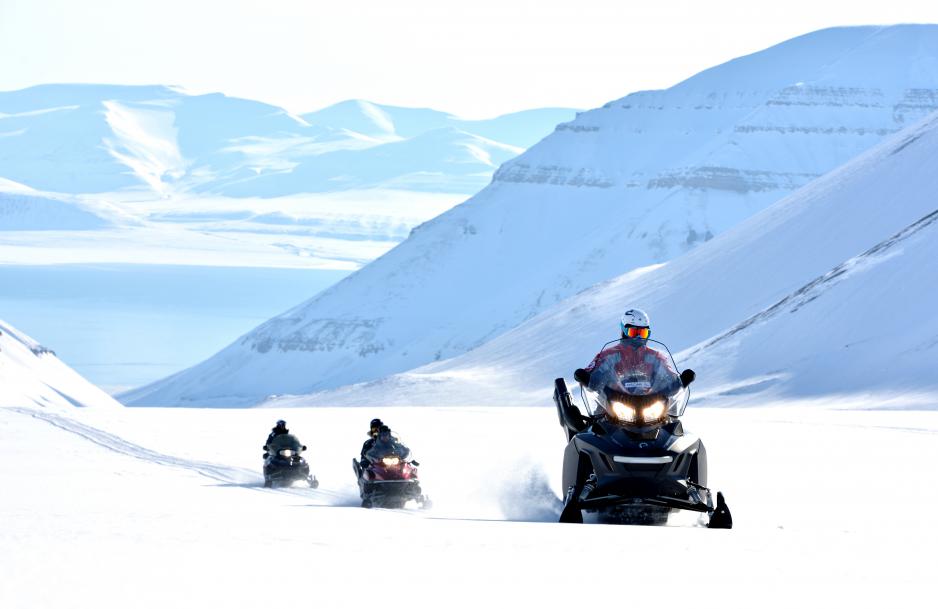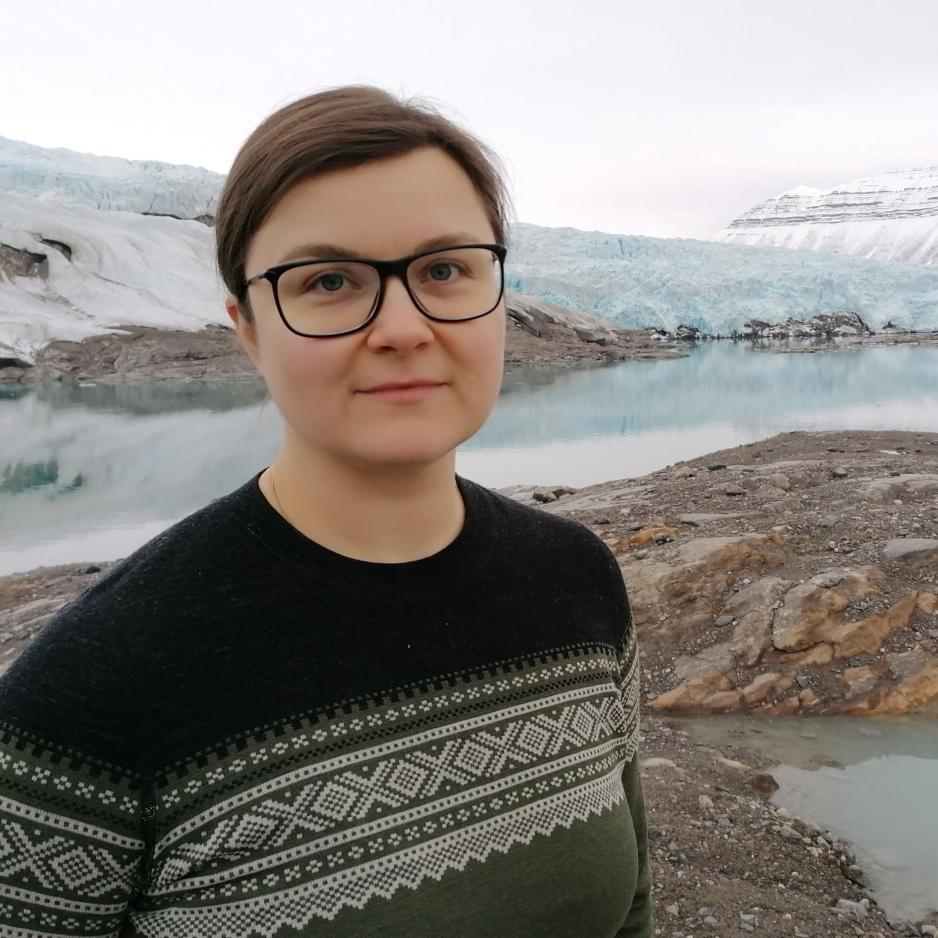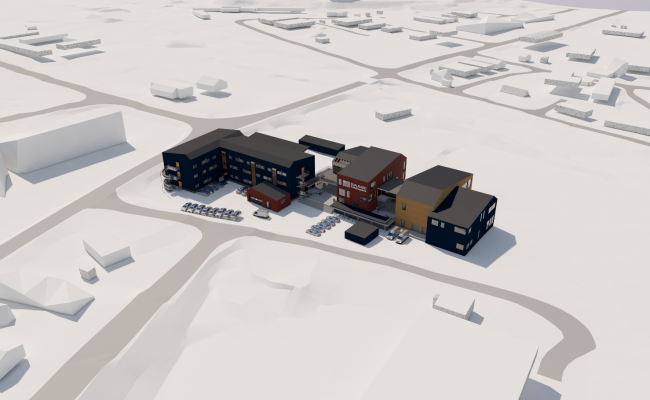Surprised at the Level of Snowmobile Pollution in Longyearbyen

The next step will be calculating how toxic the snowmobile emissions are. (Photo: Kirsti Ikonen, Basecamp Explorer)
New research shows that snowmobiles in and around Longyearbyen pollute more than expected. And the Svalbard air is polluted the most during spring.
Saken er oppdatert.
«We had expected much more pollution in winter, when it is transported through the air from Northern Europe and Asia. When it is dark, the polluting materials are not broken down as easily", says Tatiana Drotikova in a press statement from NMBU, the Norwegian University of Life Sciences.
She adds that emissions are higher in winter due to the heating of buildings in northern Eurasia.
Drotikova has written an PhD about this subject at NMBU, however, she resides at UNIS, the University Center in Svalbard, where she recently defended her thesis.
In her thesis, she monitors the emissions of poly-cyclic aromatic hydrocarbons (PAH), a group consisting of hundreds of various materials that are often referred to as tars. Too large amounts of tar may among others lead to lung cancer, premature birth and low birthweight.
Better than before
“The air pollution comes from the burning of fossil fuels. Most of this comes from cars, snowmobiles and coal, not wood burning”, Drotikova says.
Longyearbyen has Norway’s only coal power plant, though Svalbard has another one too, I the Russian mining settlement of Barentsburg.
“The Longyearbyen power plant installed a new air cleansing system in 2015. It still constitutes a major, permanent source of pollution; however, things look much better now”, the scientist says.
90 percent of the time, the smoke from the plant blows away from Longyearbyen.
Higher spring activity
“We have compared the power plant in Svalbard with similar plants all over the world, and with power plants equipped with an equivalent system for cleansing”, Tatiana Drotikova says.
She adds that the emissions in this comparison are small and rather clean, which demonstrates that Longyearbyen has a very good cleansing system.
"Human activities increase greatly with the sun’s return. The town residents start driving snowmobiles predominantly for recreational purposes during the twilight period. This is also the main attraction for tourists, the number of which significantly increases during the spring period, the researcher says.
“The PAH concentrations are clearly higher in spring than in winter", she says.
The guilt lies with the snowmobiles.
The Arctic is clean in the summer, though that does not apply to Longyearbyen!
“In winter, the weather varies. Before the arrival of spring, surface temperatures are extremely low. That allows the mix of air layers in spring to be smaller, and the air close to the ground is more or less insulated from the above layers”, she says.
Concentrated pollution
With the arrival of spring, the lowest layer is just 100 meters thick. On the mainland, it may by comparison be up to two kilometers thick. And this layer is where pollution must be dissolved.
Instead, this layer becomes a kind of lid that locks in pollution around Longyearbyen so that it becomes surprisingly concentrated.
In Ny-Ålesund there is less snowmobile traffic, and thus also cleaner air.
Cruiseship emissions
“In summer, we expect the polluting connections to be broken down faster as the sun shines 24/7 and there is little long-distance transport from the south. You will find many articles claiming that the Arctic is clean in summer, however, that does not apply to Longyearbyen!” Drotikova notes.
In a normal summer, there will also be quite a few cruise ships visiting Svalbard.
“There are 2,400 people living in Svalbard. Sometimes, cruise ships with 3,000 passengers arrive and the population figure is more than doubled. Emissions from the ships also contribute to high PAH concentrations”, Drotikova says.
However, in summer, the air layer dissolving pollution is thicker and the different air layers mix more.
No foundation for comparing
As such measurements have never before been made in Longyearbyen, Drotikova has not had any data to compare with. She also talks about the wind’s changing direction when summer arrives. As long as there is snow on the ground, the ground is colder than the fjord nearby.
In summer, however, the water is colder than the ground. Thus, the wind blows from the fjord onto the land.
In August 2020, Tatiana Drotikova and colleagues from Nowegian and Scottish research institutions demonstrated how the coal power plant pollutes rather little compared to other emission sources, such as traffic and industry.
How toxic?
The next step will be calculating how toxic snowmobile emissions are.
Drotikova tried taking samples in Barentsburg too, though her measuring equipment did not manage to collect the samples needed due to the large amount of particles in the smoke from the power plant.
In January 2021, the [Norwegian] government announced that the coal power plant in Svalbard is to be replaced by more climate-friendly solutions over the next two to three years.
The research was conducted in cooperation with The French National Institute for Industrial Environment and Risks (Ineris).
Also read
This article was originally published in Norwegian and has been translated by HNN's Elisabeth Bergquist.




